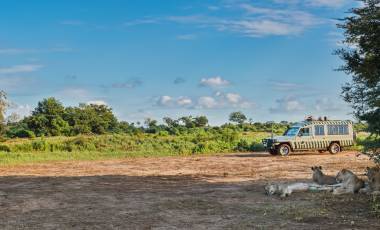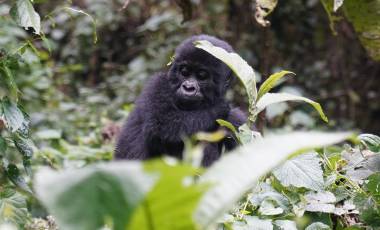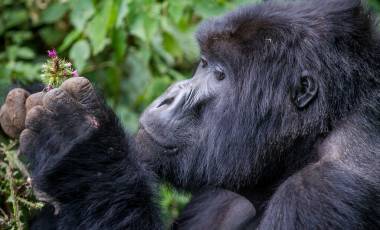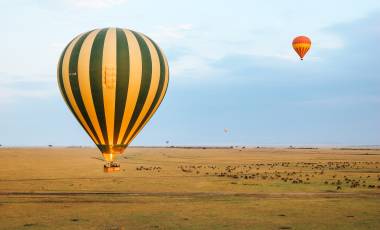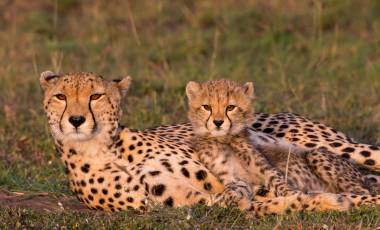A brilliant trip that shows the diversity of Costa Rica. From lagoons to rainforests to dry forests and cloud forests and beaches we saw so much of this lovely country and its flora and fauna. Highly recommended.
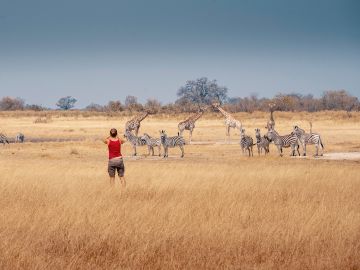
Kenya Safari Holidays & Tours
Our Best Kenya Safari Holidays
Kenya Safari Tour Highlights
Masai Mara safaris: Undoubedly one of the best locations for an African safari holiday, the Masai Mars National Reserve is home to Maasai communities whose rituals and ancient traditions remain an integral part of their everyday life. Once fearful warriors, their life is now dominated by the need to tend and protect their cattle: proud Maasai men in bright-red cloaks carry long spears to lead their herds across the vast grasslands in search of water and pastures. And then there are the animals…
Lake Nakuru safaris: A large soda lake carpeted with thousands of pink flamingo, Lake Nakuru is an awe-inspiring sight made even more spectacular when the birds take flight, forming a great pink cloud above the shimmering water. A Kenya safari tour to Lake Nakuru National Park will live long in the memory. An important sanctuary for the black and white rhino – often be seen at rest near the lake shore and under acacia trees – Nakuru is also likely to offer up sightings of huge herds of zebra and buffalo, prides of lions and wandering giraffes, and possibly a lone leopard…
The Sacred Realm of Mount Kenya: Africa’s second highest peak, Mount Kenya is regarded as the sacred realm of Ngai, the god of the local Kikuyu people, and known as the ‘place of light’. It’s an inspiring sight best viewed at dawn when illuminated by the sun’s early rays. Kenya safari holidays don’t have to just be about wildlife. Trekking fans will be drawn to the challenging granite cliffs and volcanic rock of Mount Kenya’s snow-capped peak.
Life on the Great Rift Valley: Step out onto the Rift Valley’s open plains and you’ll feel a million times smaller than you ever have before. Drive by a pride of lions in a 4WD safari vehicle, watch a herd of elephants from the back of a horse, or spot some of the 400 species of bird-life around the sparkling lakes of Navaisha and Nakuru.
Peter & Liz Rooke Discover Costa Rica
Susan Suarez Wildlife & Wilderness of BotswanaFantastic trip to a stunning country with a great guide, cook and team. I’m new to camping and was apprehensive but it was fine and we adjusted much more quickly than expected.
When is the best time to go on Kenya safari holidays?
Kenya experiences two main safari seasons – the dry season and the wet season. The best time to go on a safari in Kenya is during the dry season, which runs from late June to October. This is when the weather is cool and dry, making it easier to spot wildlife as they gather around water sources. Between these months is also when the epic Great Migration takes place, and you can witness the largest migrating herds on the planet. The wet season, from November to May, can still be a good time for a safari, as the landscape is lush and green, but it might be harder to spot some animals due to the denser vegetation.
What wildlife can be seen on Kenya safari holidays?
Kenya is a natural paradise for wildlife enthusiasts, with a vast and diverse range of animal species to be spotted on safari. The country is home to the iconic Big Five – which is made up of lions, leopards, elephants, rhinos and buffaloes – as well as other animals like giraffes, zebras, cheetahs, hippos and crocodiles. Birdwatchers will also be in their element with the vast array of bird species that can be spotted in Kenya, including flamingos, eagles, hornbills and ostriches.
FAQs on Kenya Safari Holidays
Kenya is home to several world-renowned national parks and reserves that offer incredible wildlife viewing opportunities. Some of the most popular include the Maasai Mara National Reserve, known for its annual wildebeest migration; Amboseli National Park, famous for its large elephant herds and views of Mount Kilimanjaro; Tsavo National Park, the largest park in Kenya, with diverse landscapes and abundant wildlife; Samburu National Reserve, known for its unique northern species like the Grevy’s zebra and reticulated giraffe; and Lake Nakuru National Park, home to endangered white and black rhinos, lions and the elusive leopard.
The duration of a safari holiday in Kenya can vary depending on personal preferences and interests. A typical safari holiday can range from 7 to 14 days, but some travellers prefer to book longer trips so they can explore multiple parks and reserves in greater depth. We would recommend spending at least 7-14 days on safari to fully appreciate the magnificent wildlife and sprawling landscapes of Kenya.
Kenya offers a wide range of accommodation options to suit every budget and preference. On our tours, we handpick some of the best luxury lodges and tented camps in the country. Luxury lodges provide top-notch amenities and service, while tented camps offer a more authentic safari experience that bring you closer to nature. On our Kenya Photographic Safari, you’ll enjoy the luxuries and exclusive location of premium tented camps that are nestled inside a private conservancy.
Kenya is generally considered a safe and popular safari destination for travellers. The country has a well-established tourism industry with experienced guides ensuring the safety and comfort of visitors. However, it is always advisable to stay informed about the current situation and follow any travel advisories or safety guidelines issued by the authorities. Although vaccinations aren’t required to enter Kenya, we always recommend protecting yourself against hepatitis A and B, tetanus, cholera, polio, yellow fever, tuberculosis and rabies with the necessary vaccinations.
When preparing for a safari in Kenya, it’s essential to pack wisely to ensure a comfortable and enjoyable experience. Begin by packing lightweight and breathable clothing suitable for hot days and cooler evenings, including long-sleeved shirts and trousers to protect from the sun and insects. Don’t forget sturdy walking shoes or boots for exploring the diverse terrain. Sunscreen, a wide-brimmed hat and sunglasses are also vital for protection. Binoculars and a camera with spare batteries are a must for capturing the stunning wildlife. Other essentials include insect repellent, a refillable water bottle, a small backpack and any necessary medications. Lastly, pack a sense of adventure and an open mind to fully embrace the wonders of a Kenyan safari.
The Adventure Begins Here
Get regular inspiration straight to your inbox from Exodus’ experts.
